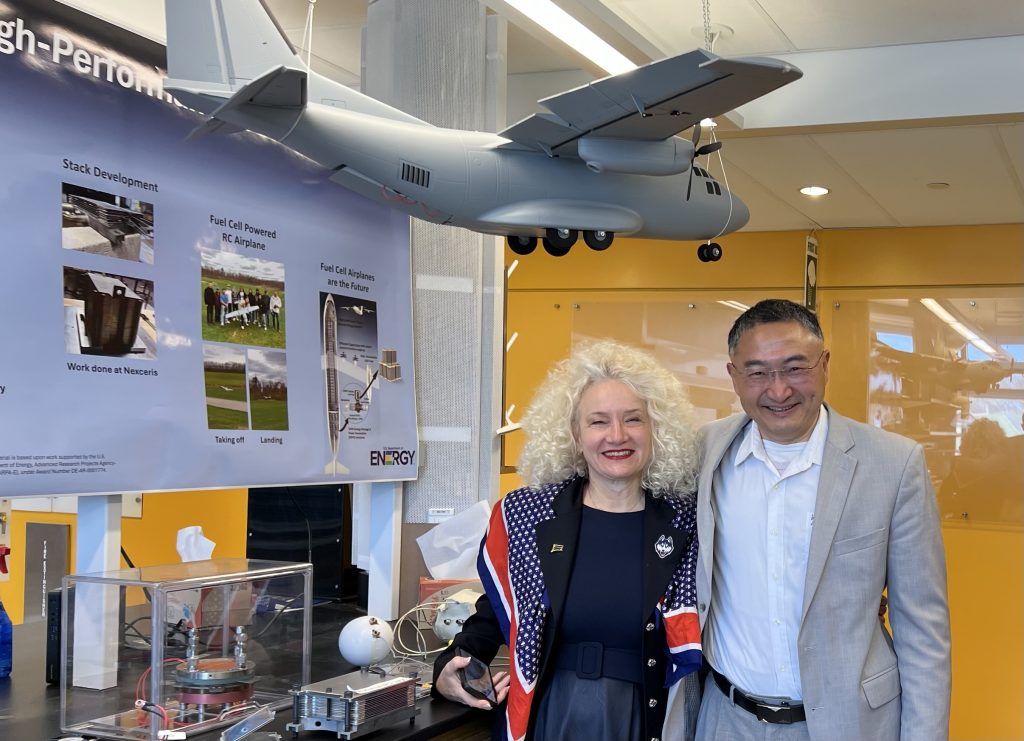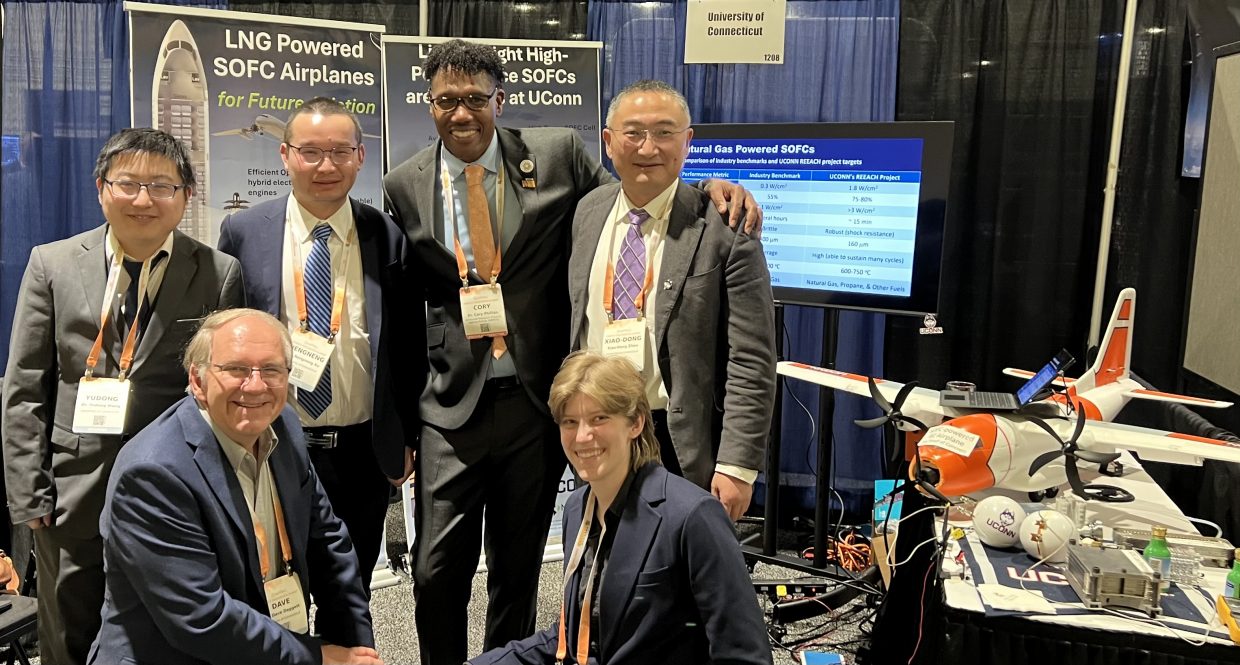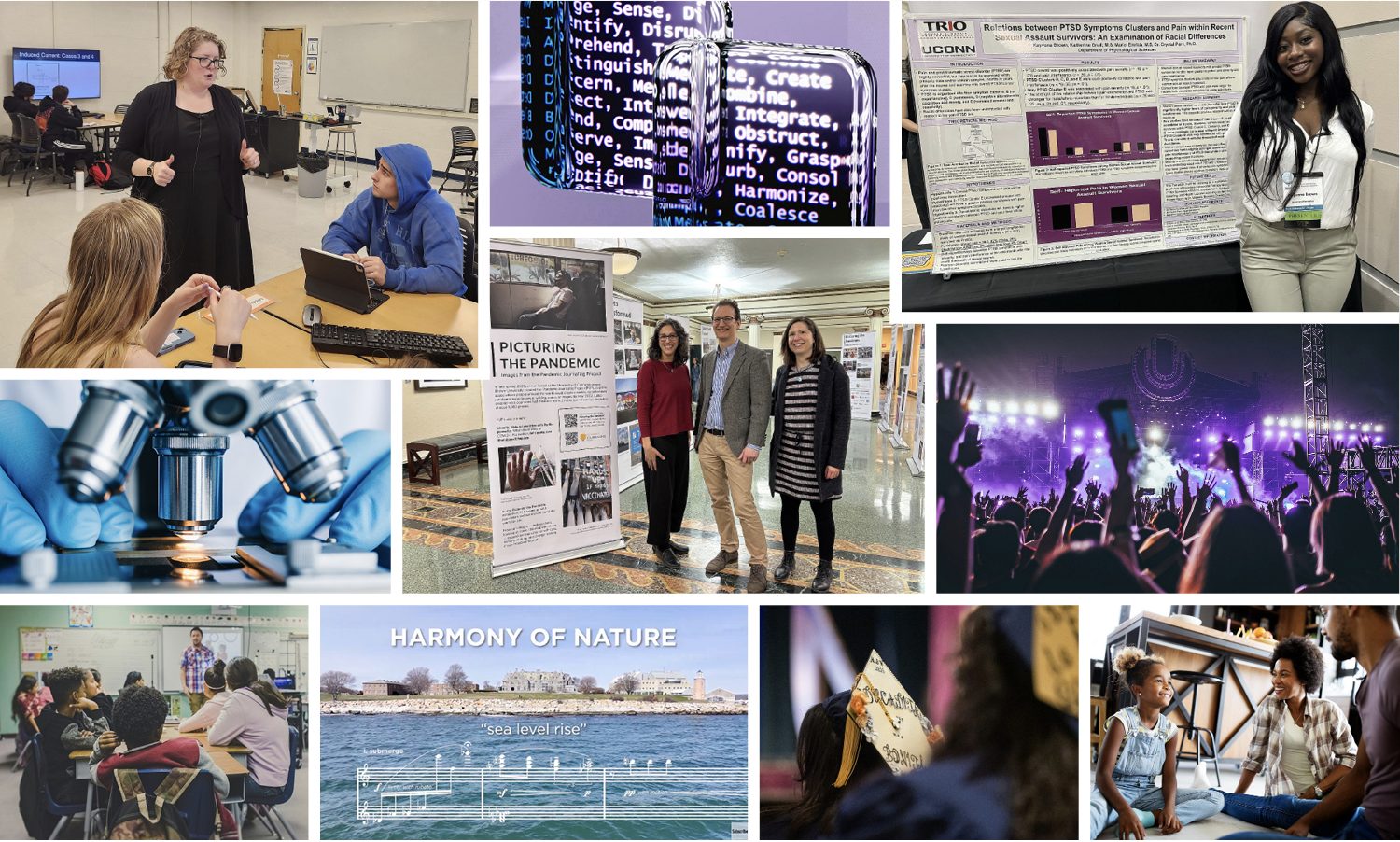College of Engineering (CoE) graduate student Megan Cunningham ’24 (CLAS, ENG) recently helped represent UConn at an energy summit, immersing herself in hundreds of innovative technologies in fields such as nuclear energy, biology, electronics, thermodynamics, and more.
“The summit was more like the engineering nerd’s version of Disney World,” she says. “It was incredibly exciting to see how future new energy technologies are being invented by the brightest engineers in the U.S.”
Cunningham is among five CoE researchers and several UConn alumni who attended the 2025 U.S. Department of Energy’s ARPA-E Innovation Summit in March. The Advanced Research Projects Agency-Energy (ARPA-E) holds the annual event to bring together top energy scientists, technologists, entrepreneurs, engineers, and industry leaders who are interested in catalyzing the future of energy innovation.
The summit exposed participants to more than 400 innovative projects, technologies, and prototypes. The UConn team showcased their own capabilities in developing high power, lightweight, multi-fueled solid oxide fuel cells (SOFC), which are especially appealing for mobility, including the aviation industry. When used in “stacks,” these SOFCs can generate electricity directly from natural gas, propane, or jet fuels through an electrochemical process, rather than combustion.

UConn’s high-efficiency chemical-to-electricity conversion technology has the potential to eliminate the range limitations of current battery-powered aviation and unlock a new era of long-range, high-performance electric propulsion.
When directly fueled by natural gas, these fuel cells outperform industry benchmarks in power density, efficiency, thermal cycling durability, mechanical strength, and safety, surpassing both current hydrogen-fueled low-temperature fuel cells and state-of-the-art SOFCs.
Xiao-Dong Zhou, the Nicholas E. Madonna Chair in Sustainability, Connecticut Clean Energy Fund Professor of Sustainable Energy, and director of UConn’s Center for Clean Energy Engineering (C2E2) is principal investigator of the project. He secured funding for the work through a total $5M cooperative agreement from ARPA-E under its Range Extenders for Electric Aviation with Low Carbon and High Efficiency (REEACH) program in 2023.
“Since the project began, we have filed over 10 invention disclosures and patent applications. These innovations lay the foundation for advancing UConn’s metal-supported SOFC technology toward lightweight, high-performance systems suited for electric propulsion,” says Zhou, who’s also professor of chemical and biomolecular engineering, materials science and engineering, and mechanical engineering.
Zhou and Cunningham attended the ARPA-E Summit with group members David L. Daggett, a C2E2 professor of practice and retired Boeing technical fellow; Nengneng Xu, assistant research professor for C2E2; and Yudong Wang, assistant research professor of mechanical engineering.
“Beyond learning about the latest academic advances, what stood out most was how closely these innovations are aligned with real-world commercial applications,” explains Xu. “It was incredibly inspiring to see how research can contribute directly to solving urgent energy challenges—and how it can help researchers realize their own value through meaningful, real-world impacts.”
Although the UConn team is specifically studying how SOFC stacks could power an airplane, their process is envisioned to first be used in applications outside of aviation for ground-based power generation.
UConn team members spoke with scientists from the University of California, Berkeley about a collaboration with their high-performing, lightweight DC-DC converters. They engaged with aerospace and defense companies RTX and Boeing personnel regarding the use of biomimicry-inspired, additively-manufactured, high-temperature compact heat exchangers. A marine-based sustainability company showed interest in using UConn’s SOFC-powered small-scale airplanes for data collection over the ocean. And Rolls-Royce engineers, who develop airplane and motor vehicle engines, were interested in collaborating on similar small-scale hybrid fuel cell-gas turbine engine systems.
“The summit allowed for discussions with groups from across the United States that would have otherwise been very difficult to facilitate,” Zhou says.
Xu personally engaged with industry leaders from Nissan and Johnson Matthey. “These conversations sparked exciting discussions about future collaborations and significantly boosted our confidence in the commercial potential of our technology,” he says.
“Conversations sparked exciting discussions about future collaborations and significantly boosted our confidence in the commercial potential of our technology.” — Nengneng Xu, assistant research professor for C2E2
Additionally, Cunningham spoke with UConn alumni, past collaborators, and current partners to gain insight about the direction of energy innovation from the perspective of those currently working in the industry.
“It was an incredible opportunity both to learn about the overall energy industry as well as make connections with researchers and professionals from across the country,” Cunningham says. “Networking with industries is absolutely critical, as it allows us to make connections with groups we otherwise would not be exposed to.”
Summit participants also attended panel discussions hosted by Department of Energy and ARPA-E leaders, industry experts, and university researchers. Discussions centered on the increasing need for electricity and using innovative nuclear fission and fusion, electrochemistry, AI datacenters, and natural resources to generate electricity.
“Technology that wasn’t feasible in the recent past is now within our reach,” Cunningham says. “These areas will be key to allow the U.S. to take the lead in producing the next generation of energy systems in the near future.”



